OSAN AIR BASE, Republic of Korea -- The 51st Civil Engineer Squadron hosted the first ever complex, joint and combined IRON RADR exercise at Osan Air Base, Republic of Korea, April 24, 2025.
The primary goal of the exercise was to test and evaluate the preparation and burial of temporary shelters while teams of U.S. Air Force, U.S. Army, ROK Air Force and ROK Army engineers conducted rapid airfield damage repair operations – simultaneously the RADR teams practiced responding to several simulated attack scenarios.
The IRON RADR exercise is all about increasing survivability of our RADR teams
Lt. Col. Andrew Myers, 51st CES commander, USAF
“The IRON RADR exercise is all about increasing the survivability of our RADR teams,” stated U.S. Air Force Lt. Col. Andrew Myers, 51st CES commander.
The 51st Fighter Wing’s “Fight Tonight” mission is to defend the base by generating combat airpower; this requires the airfield to be fully operational at a moment’s notice – and restored to fully operational status if it receives damage during an attack.
The 51st CES is responsible for making restorations quickly and efficiently through the RADR process.
It’s no secret that an airfield is a wide open space vast enough for clear lines of sight in two directions; east to west in the case of Osan AB. If damaged, the RADR teams could be vulnerable to attack until the repairs are complete.
Heavy equipment and pavements experts say the RADR process allows engineers to repair multiple damaged areas simultaneously and in less time.
“Specifically, a typical large crater repair to an airfield could take up to 12 hours, but when we execute RADR, we can get it done in six,” said U.S. Air Force Tech. Sgt. Thomas Meyer, 51st CES pavements and equipment operator and RADR instructor.
That means RADR teams would need to survive and operate on the airfield for six hours.
“Whether it's against ground attacks or small armed drones that could interfere with operations, we’re developing novel concepts for how we will protect our forces,” explained U.S. Air Force Maj. Shawn Pennie, 51st CES operations commander.
Force protection solutions implemented during the exercise include v-ditches and berms, as well as cargo containers. A berm is an earthen wall used by military personnel as a temporary barrier of protection when under attack. A v-ditch is a type of berm that takes the shape of its namesake.
“Think of a v-ditch as the most basic form of protection against fragmentation from munition that would strike in the area, as well as some blast waves from the impact,” explained U.S. Air Force Capt. Tyler Stout, 51st CES installation management flight commander. “Additional overhead cover from cargo containers is a solution that could give more effective protection from airburst munitions that disperse harmful chemical agents.”
On exercise day, the 51st CES successfully buried two cargo containers near the damaged airfield pad, allowing U.S. Army Soldiers assigned to the 11th Engineering Battalion, ROK engineers assigned to contingency operating bases across the Korean peninsula, and over 200 personnel from various units across the 51st FW to take shelter during simulated attack scenarios.
Months before the exercise happened, teams of planners and subject matter experts prioritized instructional and hands on training classes for joint and combined RADR personnel; increasing familiarity with 51st CES heavy equipment and sharing best tactics, techniques and procedures for conducting legacy and rapid pavement repairs, as well as explosive ordnance operations.
The 51st CES explosive ordnance disposal flight contributed to the realism of the exercise by destroying the foundation of an airfield pad, effectively creating the damages received from a simulated air-to-ground attack that would kick off the exercise.
“Our main goal was to make the most realistic scenario that [RADR teams] would see in a wartime environment,” expressed U.S. Air Force Tech. Sgt. Gerardo Perez, 51st CES, EOD technician. “So we used C4, TNT, and dynamite to create six small craters with ground upheaval and land disbursement – mimicking the damage that could be created by ballistic missiles and airfield penetrator munitions.”
The realism continued on exercise day with various units across Osan converging their isolated programs and strategies into one complex effort.
The 51st CES EOD Airmen created blasts to simulate continued air-to-ground attacks, bombs, and grenades sent by adversaries. The 51st Security Forces Squadron provided ground security, engaged against simulated ground attacks, and participated as simulated enemy forces using armed drones and automatic weapons to ambush the RADR pad.
Emergency responders from the 51st Medical Group stood by to conduct ambulatory care if needed and the 51st Logistics Readiness Squadron provided vehicle maintenance, ground transportation and fuel to all heavy equipment.
“I learned a lot during the exercise today,” said U.S. Army Staff Sgt. Justino Peguero, 11th Engineering Battalion heavy equipment operator. “We implemented different ways to take shelter in case we receive contact from enemy forces. Some of the locations were trenches in the ground, inside [cargo containers], behind berms and even behind the heavy equipment if we were too far away from an expedient shelter.”
“I think everyone in the [643rd Engineering Construction Company at Camp Humphreys] needs this knowledge, especially being forward deployed here in Korea. If attacked, we would be working with the Air Force, ROKA, and ROKAF to restore the airfield. So, strengthening those relationships and being on the same page is super important,” expressed Peguero.
Reflecting on the broader impact of the exercise, strengthening the relationships and resilience of Airmen, Soldiers, and ROK partners, Pennie emphasized the critical link between rapid airfield recovery and success of the ‘Fight Tonight’ mission:
“The faster we can fix an airfield, the faster we can launch jets and continue to execute operations. And ultimately that’ll increase our survivability here [at Osan] because we’re able to defeat and degrade our enemy’s ability to attack us.”
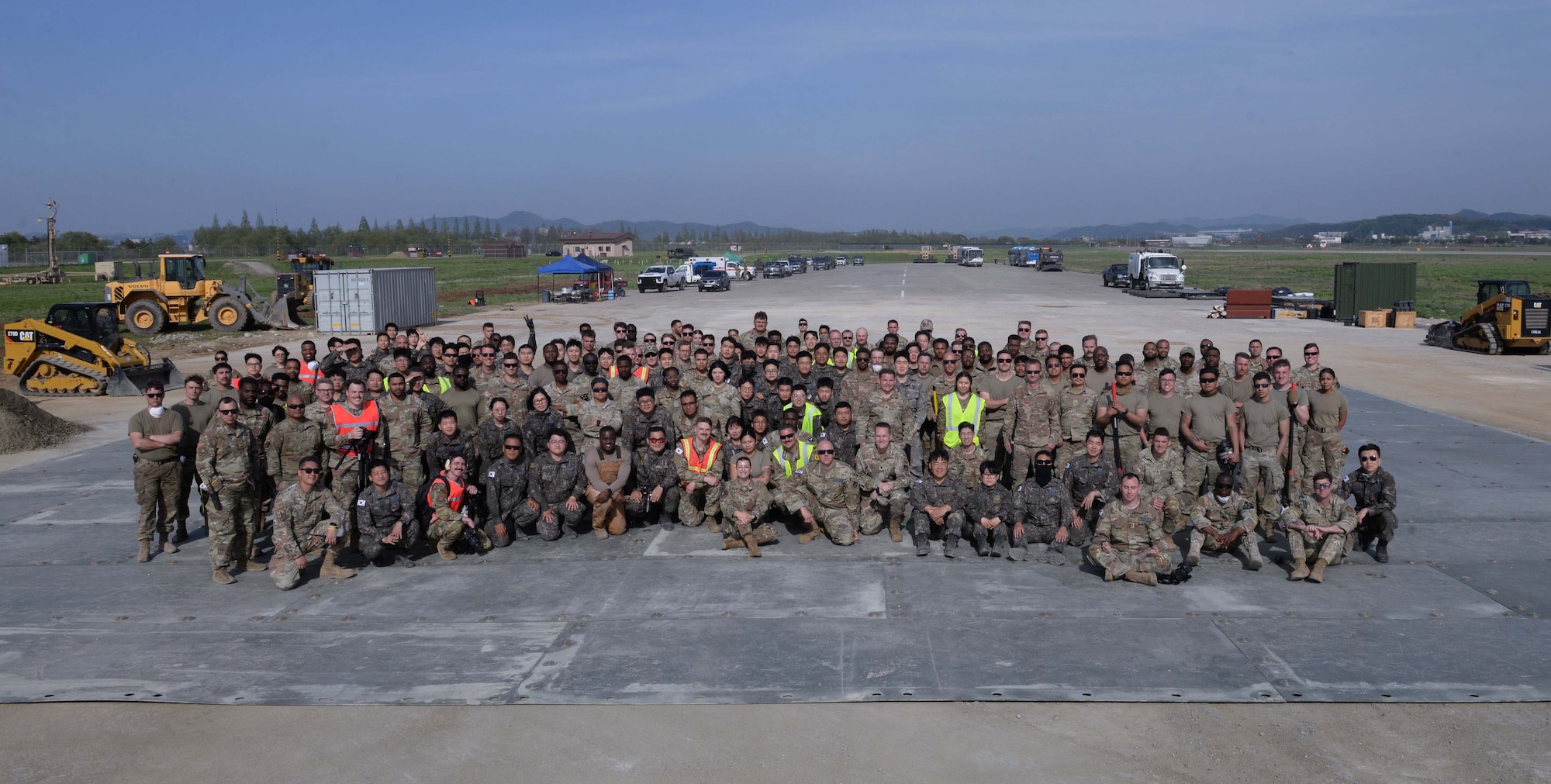
250424-F-BG083-1662
Members of the U.S. Air Force, U.S. Army, Republic of Korea Army, and ROK Air Force pose for a photo during exercise IRON RADR at Osan Air Base, Republic of Korea, April 24, 2025. The team of civil engineers, logistics technicians, vehicle maintainers, explosive ordnance technicians and emergency medical responders worked together to repair craters in a damaged airfield pad enhancing U.S.-ROK partnership and displaying interoperability in action. (U.S. Air Force photo by Staff Sgt. Kahdija Slaughter)
1 of 8
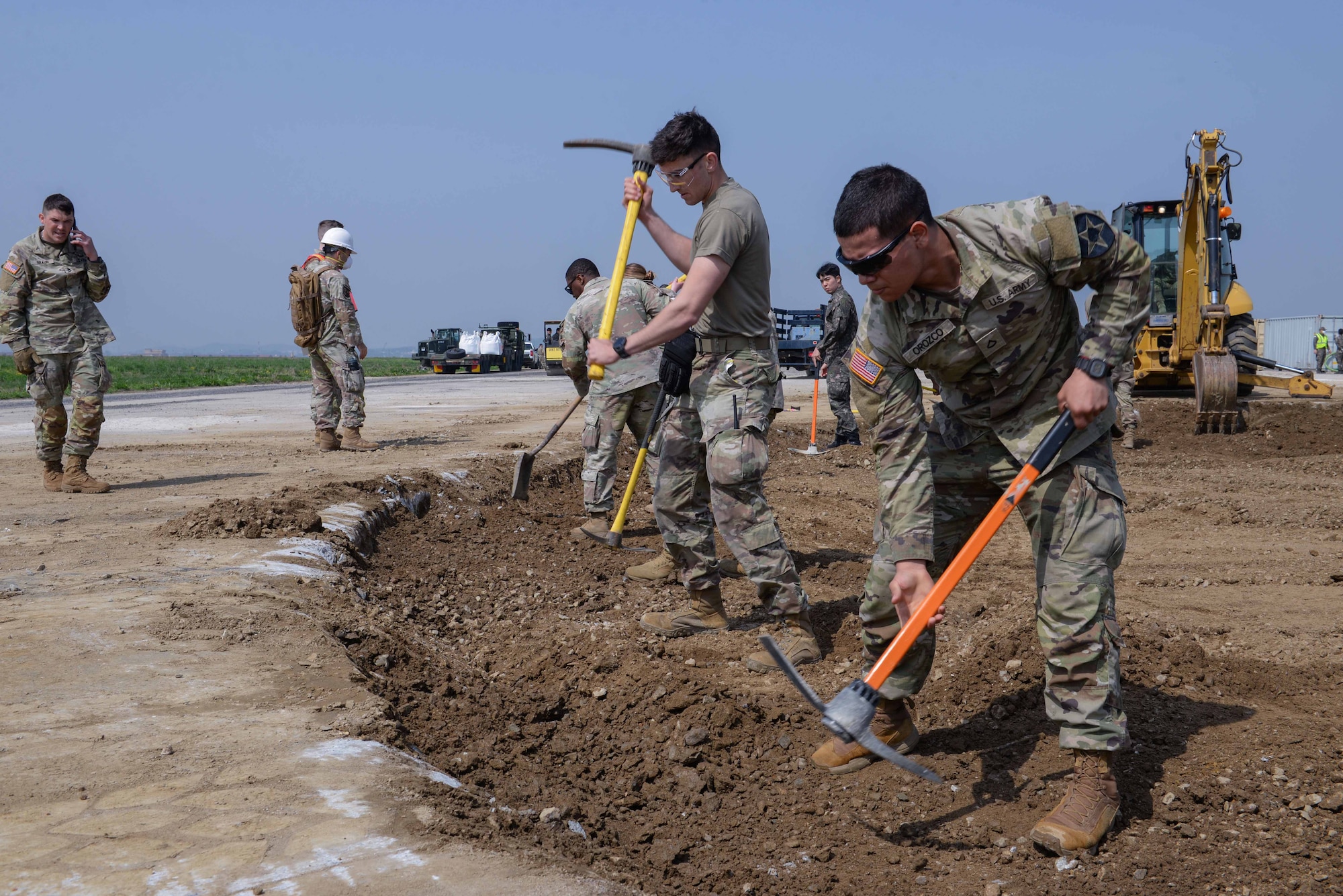
250424-F-BG083-1100
Members of the U.S. Air Force, U.S. Army, Republic of Korea Air Force and ROK Army loosen rock material in a large crater during IRON RADR at Osan Air Base, Republic of Korea, April 24, 2025. During the exercise, one large and six small craters were restored using legacy and rapid airfield damage repair techniques. IRON RADR is the first complex, joint and combined exercise on Osan AB that tests, evaluates and prepares civil engineers to safely conduct RADR operations in a simulated contingency environment. (U.S. Air Force photo by Staff Sgt. Kahdija Slaughter)
2 of 8

250424-F-BG083-1127
Members of the U.S. Air Force, U.S. Army, U.S. Marine Corps, and Republic of Korea Air Force score and cut around the ground upheaval of a small crater in a concrete airfield pad during IRON RADR at Osan Air Base, Republic of Korea, April 24, 2025. Phases in the rapid airfield damage repair process include debris removal, upheaval marking, pavement cutting, excavating, flowable fill, rapid setting, and curing time. The goal of the IRON RADR exercise was to test, evaluate, and prepare civil engineers to safely conduct RADR operations in a simulated contingency environment. (U.S. Air Force photo by Staff Sgt. Kahdija Slaughter)
3 of 8
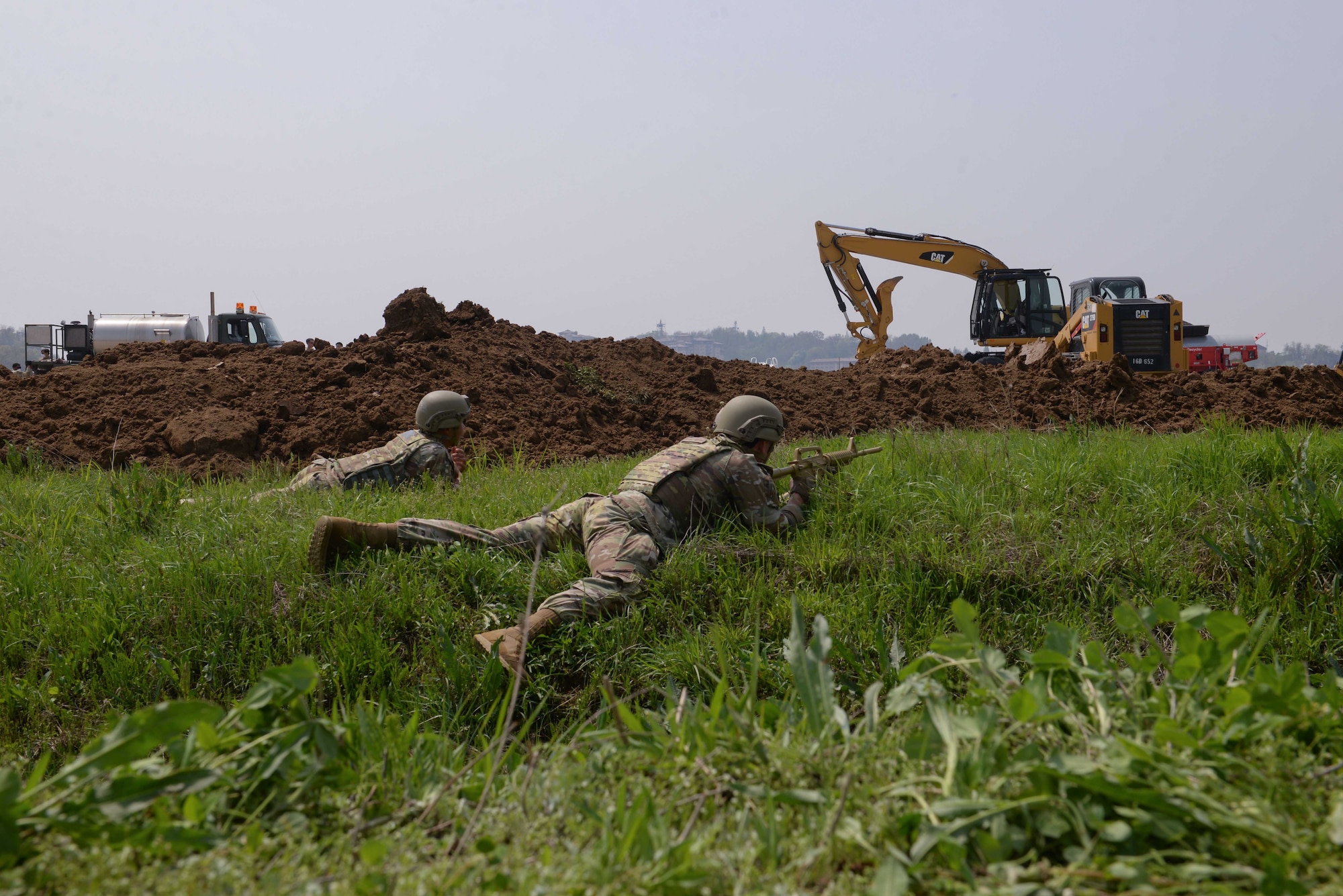
250424-F-BG083-1231
U.S. Air Force Airmen assigned to the 51st Security Forces Squadron respond to a simulated ambush with ground protection maneuvers during IRON RADR at Osan Air Base, Republic of Korea, April 24, 2025. IRON RADR is the 51st Civil Engineer Squadron’s first complex, joint and combined exercise that tested, evaluated and prepared engineers to safely conduct rapid airfield damage repair operations in a simulated contingency environment. (U.S. Air Force photo by Staff Sgt. Kahdija Slaughter)
4 of 8
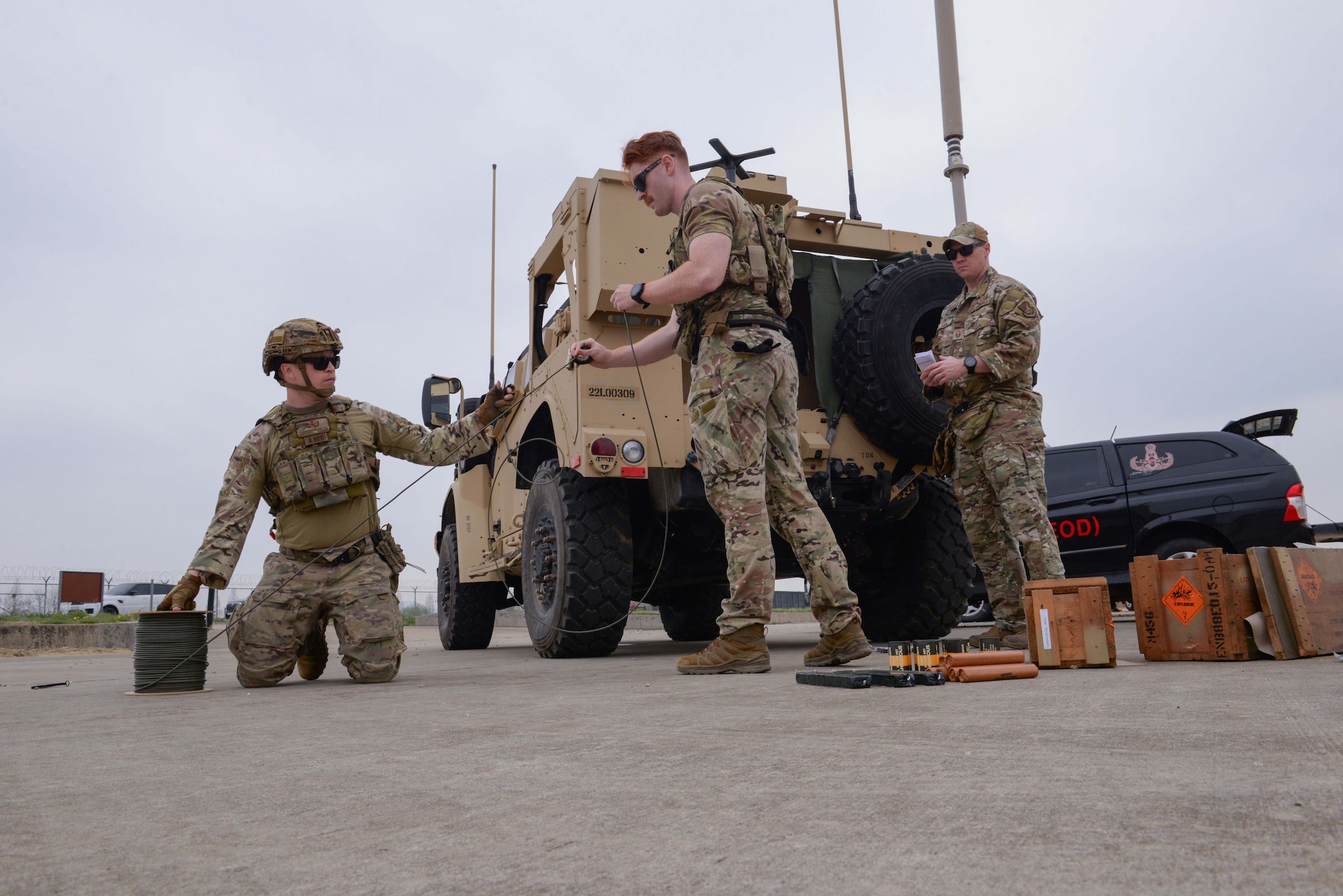
250418-F-BG083-1010
U.S. Airmen assigned to the 51st Civil Engineer Squadron explosive ordnance disposal flight, cut demolition wire for dynamite, TNT and C4 explosives at Osan Air Base, Republic of Korea, April 18, 2025. The EOD Airmen safely rigged explosives to create multiple craters ahead of the first complex, joint and combined IRON RADR exercise at Osan AB. Rapid airfield damage repair is a process for repairing structural damage on airfields to restore combat airpower generation. (U.S. Air Force photo by Staff Sgt. Kahdija Slaughter)
5 of 8
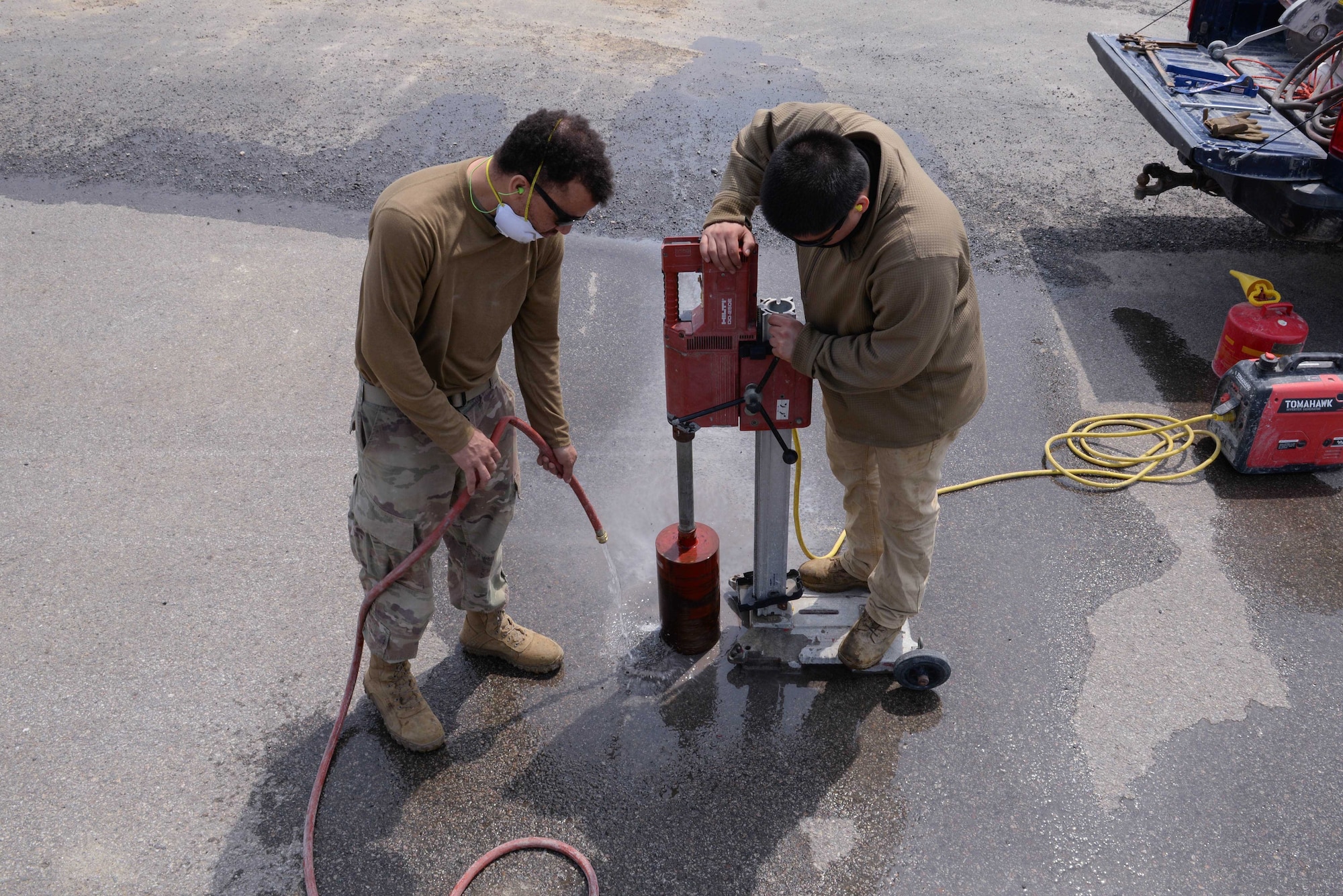
250416-F-BG083-1026
U.S. Air Force Staff Sgt. John McCardy, 51st Civil Engineer Squadron heavy equipment supervisor, left, and Senior Airman Jose McRae, 51st CES heavy equipment journeyman, drill a hole into an asphalt airfield pad at Osan Air Base, Republic of Korea, April 16, 2025. After six holes were drilled, Airmen from the explosive ordnance disposal flight packed the holes with dynamite, TNT and C4 explosives, ultimately blasting small craters that mimic damage from ballistic and airfield penetrator missiles. The craters were restored during the first complex, joint and combined IRON RADR exercise to test, evaluate and prepare civil engineers to safely conduct rapid airfield damage repair operations in a simulated contingency environment. (U.S. Air Force photo by Staff Sgt. Kahdija Slaughter)
6 of 8
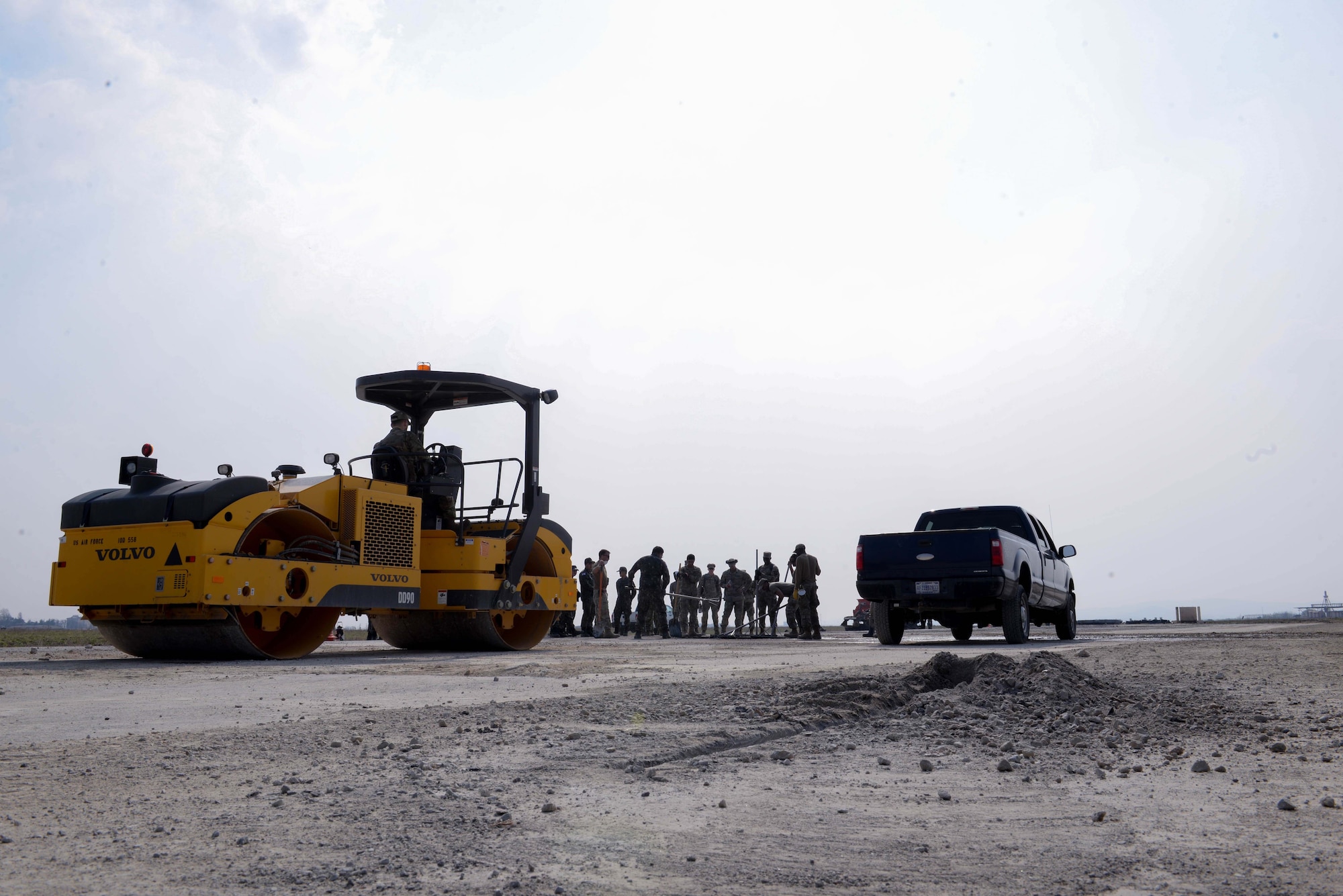
250403-F-BG083-1063
Members of the U.S. Air Force, U.S. Army, and Republic of Korea Air Force participate in a hands-on rapid airfield damage repair familiarization training hosted by the 51st Civil Engineer Squadron at Osan Air Base, Republic of Korea, April 14, 2025. RADR is a process for repairing structural damage on airfields to restore combat airpower generation. The training allowed engineers assigned to contingency operating bases across the Korean peninsula to learn the RADR process and use heavy equipment to accomplish each step of the RADR mission. (U.S. Air Force photo by Staff Sgt. Kahdija Slaughter)
7 of 8
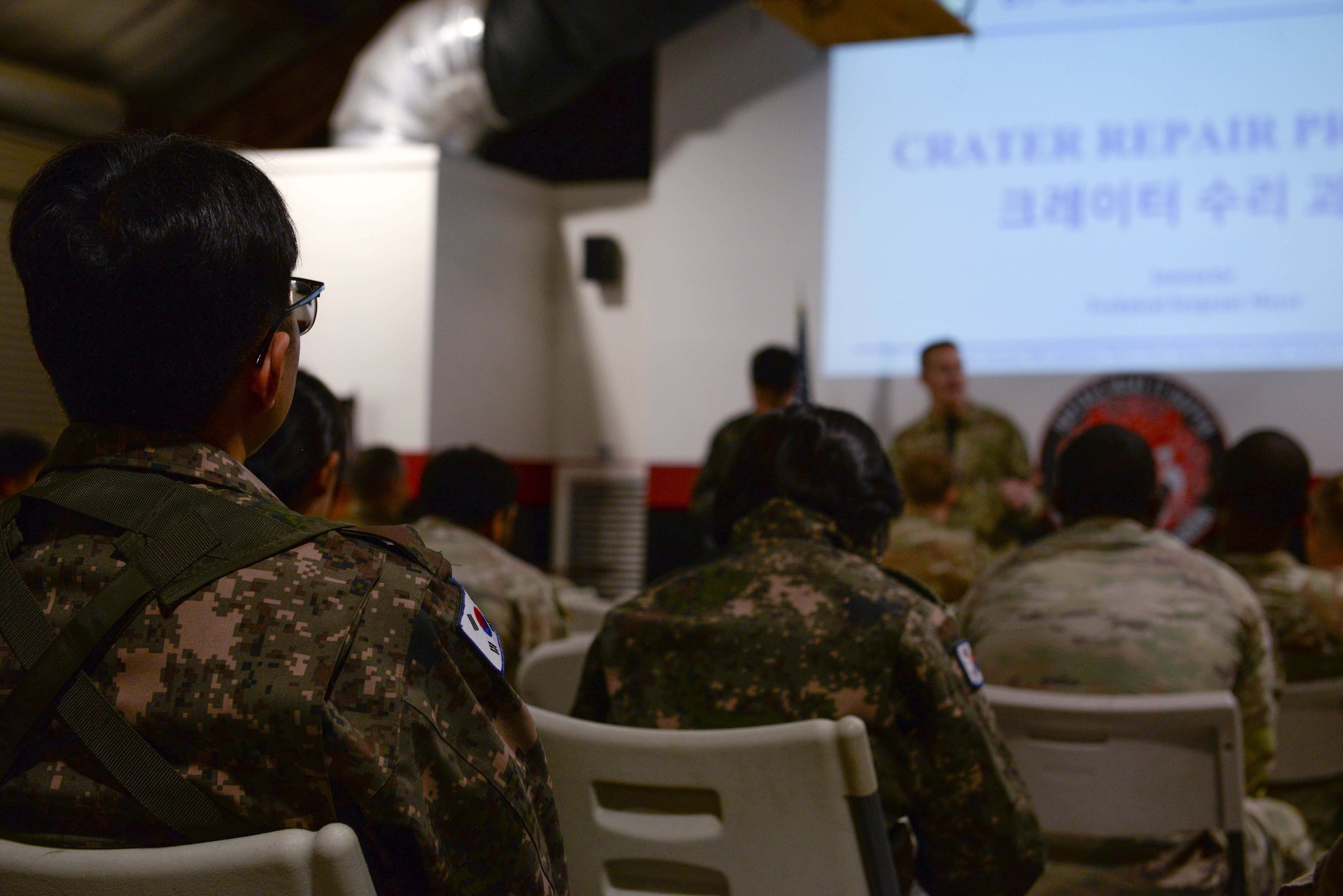
250403-F-BG083-1020
Members of the U.S. Air Force, U.S. Army, and Republic of Korea Air Force participate in a rapid airfield damage repair familiarization training for the first complex, joint and combined IRON RADR exercise at Osan Air Base, Republic of Korea, April 14, 2025. The goal of IRON RADR was to test, evaluate and prepare joint and allied engineers to respond to simulated threats during repair operations; increasing survivability against continued air and ground attacks. (U.S. Air Force photo by Staff Sgt. Kahdija Slaughter)
8 of 8